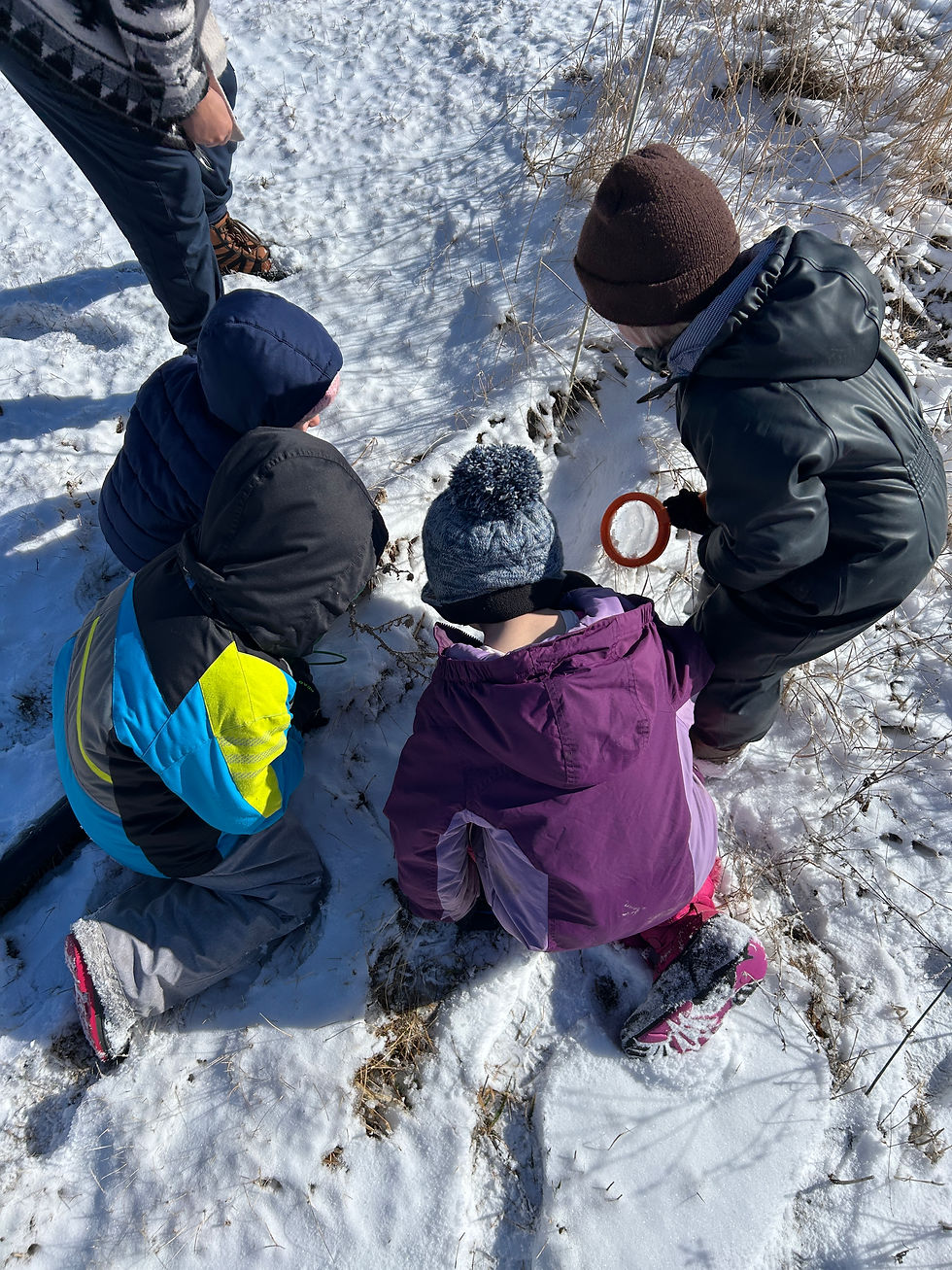Adventures in Sustainability: Food Waste and Some Great Alternatives
- Jenny Hill
- Dec 3, 2024
- 3 min read
The numbers are sobering:
According to the Environmental Defense Fund, 160 billion pounds of food goes uneaten every year in the United States. That is about 35% of the U.S.’ food supply. This number includes waste from food companies. Corporations need to do better – much, much better – in this area. This post will examine some success stories of reducing food waste on a corporate level as well as actions individuals can take.
Food waste affects food security, personal health and of course, the climate. The waste is not only in the waste of food itself but in the processing of the waste (hauling it to a landfill, needing ever-larger containers for household trash). Of everything that gets sent to the landfill, food waste is the largest component. This, frustratingly, includes food that is still safe to eat.
Meanwhile, there are still people, likely in our own communities, experiencing food insecurity. As mentioned in this post from March, 90% of SNAP (Supplemental Nutrition Assistance Program) recipients still experience food insecurity.
Success Stories
I love to hear success stories. And they are out there when it comes to food waste. From coming up with ideas for food processing companies to generate less waste to begin with to having them upcycle things like vegetable peels and trimmings to create new products, ideas are out there.
This August 2021 episode from the Nothing Wasted podcast covers the story of Jasmine Crowe, CEO of Goodr. During the pandemic, Crowe, who ran pop-up restaurants that fed homeless people, became aware of all the food going to waste as businesses shut down. Seeing it as a solvable logistics problem, Crowe used technology and supply-chain knowledge she learned in business school to show businesses what using their food waste could do for their bottom lines. You can listen to the full story and learn more here.
Personal Food Waste
“But,” you say, “I am not an organization that generates food waste. I am an individual.” Here are some tips from the University of Minnesota Extension Agency for reducing your personal food waste footprint:
Plan weekly menus and include using leftovers on the menu
Be a smart shopper – always use a list and pay attention to what’s on sale/in season
Understand food product dating
Get the refrigerator organized so older items get eaten first
Try composting
For the ultimate source of what's in season, check out your local farmer's markets.

And yes, composting, always seems like a good idea, but a lot of work to establish. Depending on many factors–where you live, how much compost-type waste your household generates, your potential use of compost you create–there are many options. If you are a gardener, this article from the Minnesota State Horticultural Society is a great resource.
“But,” you say, “while I like the idea of composting, I am never going to start my own.” If starting a home compost system is not something you want to do or can do, I offer these two words: community composting. Community composting can happen on any scale–from you saving your compost for a friend or neighbor who composts to a local school or community having a compost drop off, all the way to a regional facility….there are many creative options.
Project Optimist recently featured a profile of a new composting facility in Hoffman, MN. It is a fairly complicated process, but one with a big pay-off.
This link from the Minnesota Pollution Control Agency has a statewide-locator of MPCA-permitted compost facilities. It also has guidelines for starting a community composting site.
April Hepokoski of Zero Waste Duluth, a Back to Basics vendor and presenter, recently put together a Zero Waste Duluth guide which includes listings for community composting.
What We Can Change Today
Besides success stories, I also love tangible stuff that I can start today (or at least tomorrow).
For me, an important step forward happened last fall when I had the very first vegetables I’d grown myself–some rutabagas and carrots. As I cut the tops off and peeled, I was a little queasy at all the “waste” and how the quantity of my harvest shrunk as I cut it up to look like what I brought home from the store.
I remembered reading about making your own vegetable stock–just boil all the stuff you’d usually throw away the quick Google search I did revealed.
For a great overview on zero-waste cooking, check out this article by Chelsea Debret.
What are your creative food waste hacks? Do you live or have you lived where community composting was available? Is it your dream to use community composting? Email your comments to info@happydancingturtle.org and we’ll share in a future blog!





Comments